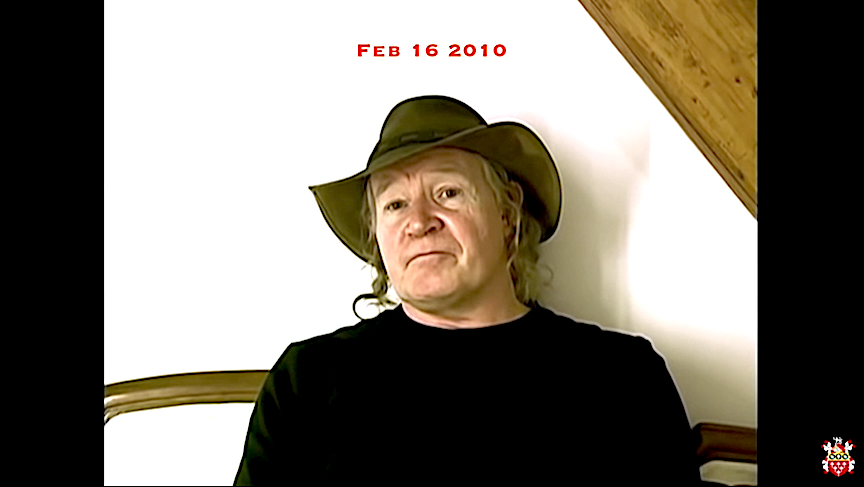International Public Notice -- The Mistaken Schism
By Anna Von Reitz
****It has been extraordinarily difficult to get this Notice posted in entirety. In the interests of properly demonstrating King John I's ability to contract for himself versus his inability to contract for England as a whole, we have amended this Notice, and are now sending the Amended Notice a second time:****
Key to all the illusions and delusions is the misunderstanding of what the "crown" is, and whether or not King John "acting as" King of England, had the right to sign and enforce his apparent Concession to Pope Innocent III, all those centuries ago?
And the answer is, yes, he did have the right to sign it with respect to himself and his limited Papal Office, but not with respect to England as a whole.
The grant of the Earth to Mankind is immutable and cannot be rescinded or changed or altered in any manner at all. It stands as fact, confirmed by Universal Law, and can only be altered by violating Universal Law.
This is also reflected in the Biblical Record that Christians, Muslims, and Jews all claim to believe, as an Express Trust vouchsafed to Mankind in The Book of Genesis, and such an Express Trust cannot be altered or redefined or reinterpreted by anyone.
If the Roman Catholics claim, copyright, and believe The Bible, then the Express Trust of the Creator which granted the Earth and the dominion thereof to Mankind cannot be redefined or reinterpreted as pertaining to Humans instead --- not by anyone, not even the Pope.
Yes, the grant is to living men, not "persons" -- that is, humans, instead.
It's ours--- all of us. Forever.
Now, we get to the Norman Conquest, which began in 1066 A.D. and ended in 1087 A.D. with the Settlement of the Norman Conquest by a Will, another Express Trust.
It was the Great Work of William, that is, Guillaume of Normandy, to utterly destroy any possibility of there ever being another singular King standing on the land jurisdiction of England.
At most, there could be an elected "King of Kings", a Corporate Office, severed from the Land and Soil except -- in some instances, for their own holdings, but certainly severed in the case of King John and his progeny.
Immediately upon seizing the land that he was owed by birthright and by agreement of Edward the Confessor (who among other things, "confessed" -- another word for "admitted"-- that William was the rightful King), William engaged in an excruciatingly detailed inventory of exactly what he had conquered.
Having considered the problem of England throughout his lifetime, William determined that the best way of ending all the mischief England caused was to divide it up, minutely, into separate little kingdoms, and to mix the land grants of these kingdoms into each other, so that all the neighbors would have good reason to live at peace with each other.
Thus, the grant of Shrewsbury to the ancestral and hereditary Lords, the Talbots, was not simply a grant of Shrewsbury and surrounds as one might imagine, but included sundry other parts and parcels scattered like islands in land belonging to other Lords.
Each one of these oddly distributed kingdoms was granted without limitation so that each one of the faithful French Barons became a sovereign in their own right in England, on their own parcels of land, vouchsafed to them by the only rightful owner of it.
And thanks to the fastidious inventory, absolutely all of England was surveyed and accounted for, so that not as much as a dock remained unsecured.
As a final safeguard, William the Conqueror, who ruled not only as a King by military conquest, but as the lawful heir from before Roman times, disinherited all his own children, so that they should have no interest in England at all.
England was to be most truly and permanently conquered by the self-interest of all his Barons, forever maintaining their own interest in their own kingdoms. Their self-interest was to be moderated by the scattering of their holdings, one into the other, so that access to and enjoyment of their holdings was interdependent. Finally, by removing the inheritance from his own children, William sealed his scheme to permanently subdue the megalomania of England and entrusted it to fate.
William's claim to England, which was admitted or "confessed", by Edward the Confessor, derived from the westward migration of the pagan Celts and in land holdings and familial relationships carried forward through the Roman Empire and through the Dark Ages into his own relatively modern times. We see the advent of Christianity into this particular pagan family as a record preserved in the stories about King Arthur, but having this particular impact some centuries later.
William wore his crown in England under different terms than the Anglo-Saxon Kings; William owned it all by rightful inheritance -- privately -- quite apart from any later-created public office as a Sovereign owing any Crown lands to Rome. William also ruled by military conquest, which is again, a private condition, not subject to political offices conferred by foreign powers.
So what William put in place, as well as what he denied being put in place, established what he most desired -- the division and permanent conquest of England.
He granted the land of England as a written Express Trust, known as a Will, and he left nothing to be interpreted; thanks to his extensive inventory and explicit language, the Settlement of the Norman Conquest was set in stone.
And it has required all the wiles and guile of the Successors of the Roman Empire to make it appear otherwise.
Now, let's look at the Crown, which is granted by the Pope, and which is an emblem of a political and spiritual office--- with rights and responsibilities dictated by the Pope.
Obviously, the Crown belongs to the Grantor and is granted to the Grantee; it was given to King John I as the Overseer of the Commonwealth lands of the Pope in England, and the true, fundamental Crown of England is a peculiarly Christian office and emblem attached firmly to the Roman Catholic Church and the common wealth land possessions in England that later became Commonwealth (Crown) lands upon being added to the Aeterni Regis Trust, around three hundred years after the Norman Conquest.
It was the original "common wealth lands" belonging to the Church that King John I was "King" of, as he was forever precluded from inheriting land in England, and in that capacity, he was always a vassal and agent of the Church of Rome. Never anything else.
A great deal of scholarly supposition, mainly by Roman Catholics, has attached to the "Concession" written and signed by King John I promising that he would yield his Crown to Pope Innocent III if he or his kingdom ever broke the pledges made in the Concession ---giving this an unwarranted importance and unjustifiable meaning.
King John established this Concession admitting his utter dependency and the dependency of his Crown on the Pope and the Church -- which is, of course, true, as he was only acting as an Overseer of Commonwealth lands gifted to the Church by former rulers.
A year later, he broke his apparent pledge to Rome by signing the Magna Carta. He had no contractual escape from this, either, as he, himself, owned no land in England and couldn't bind those who did.
Immediately after that, he was obligated to yield his Crown back to Pope Innocent III by operation of his prior contract, and again, forced to pay tax to rent his crown and regalia back.
And all of this was over what? His political and spiritual office as Overseer of the Pope's Commonwealth land in England.
The reason that the Magna Carta has stood for the better part of a thousand years is that all of this has been understood by the Heirs of the Norman Settlement in England, and from time to time, enforced, as it no doubt will be again.
The only true monarchs are the Heirs of the Norman Settlement, because they are the only living men and women who actually own the land by direct grant from the lawful inheritor -- and one must have earned a true claim to land to have standing as a sovereign.
The Pope's interest remains what it always has been-- the enjoyment, care, benefit, and upkeep of the gifts of land bequeathed to the Church as "common wealth" to be developed for the provision of relief to the poor, the ill, and the indigent.
The Pope never had anything to say about any of the other land holdings in England and it is merely a deceit and presumption to assume that he does, however it may be maintained and asserted by his appointees, agents, and officers.
It follows that "King" John I, as the Pope's Agent overseeing the Commonwealth lands, owed his Crown to the Pope, and that Crown was emblematic of a political and spiritual Office being exercised in an agency capacity and did not imply any direct land ownership by John.
The land and soil of England already belonged to the Norman Barons, which is why John was obligated to agree to the Magna Carta on all lands not belonging to the Church.
Much later, of course, John's Successors weaseled around the Christian obligations of the Christian Crown, created new offices and new crowns for themselves in the international jurisdiction of the sea and the global jurisdiction of the air --- which they have used to promulgate war and every kind of evil, simply by evading the Christian Crown and it's constitutional obligations ever since the reign of Queen Anne in the early 1700's.
We detailed the surreptitious abdication of Elizabeth II as described in Regina v. JAH (John Anthony Hill) and also the recent "coronation" of Charles III that bypassed the Christian Crown and ceremony entirely.
The Church has pulled similar evasions by operating under the pagan Office of the Roman Pontiff instead of the ministerial office of the Bishop of Rome.
This corruption and evasion and pretense has so far contributed to political and social and cultural decay that we have lawless governmental service corporations merely acting "as" governments engaged in wars for profit, illegal occupation of independent countries, and franchise corporations used to impersonate living people and trample the natural rights of living men, destroying the order of creation and the natural resources of the Earth --- all under the supposed authority of a substituted and foreign crown, exercised by a mere agent of the Pope and Popes operating as Roman Pontiffs.
As we've seen, the Crown of England is completely legless unless operated by the actual owner of the Commonwealth lands, the Pope, and they do not constitute a kingdom, but are rather a gift estate that was later included in the Aeterni Regis Trust.
Now, we are additionally treated to the spectacle of this landless, legless "authority" undermining the lives and biology and genetic integrity of billions of people throughout the world.
The Templars, exorcised from the Church under the demand of Pope Clement V for their obedience, have been the agents of the "Secular Church" run by the Roman Pontiff out of the Inner City of London since the 1100's when all of this, and -- not coincidentally, the collection of the "income tax" to pay for Crusades and the whole insanity of killing for Jesus began -- while the Knights of Malta have been the "left hand" of the Order and supplied the interlocking trust directorates and military coordination -- still appearing, like the "right hand" Hospitaliers, to be within the Church.
It is all a bunch of venal self-interested fraud by business interests seducing the Church; and, all having no more foundation in spiritual law or any other kind of law, than the distribution of confetti thrown into a rising wind.
No wonder Pope Benedict XVI was so anxious to dissolve the Romanus Pontifex land trust and distribute its assets to his tribal cronies, and also anxious to dissolve the Office of the Roman Pontiff as of 2011.
No wonder, either, that the loyal Jesuit Bergolio was ordered to undertake the functions of the Office of the Roman Pontiff while wearing the vestments and name of "Pope Francis" and at the same time, the Christian and ministerial Office of the Bishop of Rome was retained by Benedict XVI and taken to his grave, so as to very quietly and permanently bury it.
We are not deceived. The Archbishops and Cardinals and members of the Roman Curia cannot claim ignorance, either.
We know why King Charles III is no lawful King of England, and cannot be, just as his Mother, Elizabeth II was never a lawful Queen, and was instead obliged to sit on the Chair of the Estates.
We also know why Pope Francis is no Pope and not the Bishop of Rome and not acting in any Christian Office or capacity at all.
Finally, we know why we are not bound by any of this nonsense, and why those who subscribe to it are by definition either victims or criminals.
This criminality was brought to us all by that Old Deceiver, that two-headed Snake cast down upon us ages ago, known as Imagination and Belief -- which William the Conqueror defeated with flat-footed acumen.
Just as Edward the Confessor confessed the truth that William of Normandy was the right-wise King of England, William the Conqueror didn't conquer by armed might alone, but by knowledge of land law and his own lineage, and by shrewd calculation of the nature of men.
William knew and we should know that our base nature is never owned, but only guided, that the physical world is passing through our hands, but the spirit is everlasting, with virtue and vice entwined until the final conquest.
William trusted the greed and arrogance of his nobles to enforce one against the other, and their mutual self-interest to eventually breed peace in England -- a country that has been at war within itself and in the world abroad long before the days of Julius Caesar.
It is to William's shrewdness and to Natural Law that we owe our victories in this Apocalypse, and which allows us to forestall any further consequence. We are not bound to relive history that we have not forgotten, nor have we forgotten who and what we are; we simply slumbered for a time, and are now awake.
Awaken, men and women, to the idiocy of the beliefs being foisted upon you, which lead you to imagine that you are a name, that you are in the presence of overpopulation in the midst of a population collapse, and that a harmless natural gas is responsible for ongoing environmental catastrophes caused by malice and avarice.
Or worse, lead you to believe that contracts apply to babies in their cradles, and that the debts of dead things accrue to living men, and that Express Trusts can be redefined or overcome by ignorance and prejudice.
This and much else people have believed in, and subscribed to, is nothing more or less than lies and webs of purposeful deceit--- phantoms of imagination akin to nightmares which must come to rest and be dismissed like shadows fleeing the rising day.
The sovereignty of England is not vested in a Papal Crown of any sort; and insomuch as a portion of the government of England has been allowed to the Christian Crown, that government failed upon its abdication, over 300 years ago.
Whereupon, we Americans issued the default and declared our own sovereignty and issued our Sovereign Letters Patent, effective November 4th 2015, with no objection from Pope Francis or the then-Queen, as they did not and cannot inhabit our jurisdictions, and must fall silent as things come before the Living God owed all actual, natural, and general jurisdiction.
We have established our lineage and provenance and evidence of our blood and have recorded and published our claim in public and in private via Ecclesiastical Deed Poll; we have placed liens in the air, on the sea, and on the land upon all the Guilty Parties and their charters and franchises; we have claimed all their debts and interest as our credit; all their systems of weights and measures, money and currency, surveys and inventories, taxes and tariffs, all apparatus of the so-called corporate governments, as owed to us, the living, and similar to our ancestor, William of Normandy, we have established our Express Trusts both Public and private to contain these assets and ultimately distribute them back to the rightful owners -- the living people and their lawful governments.
Most recently, we have moved to foreclose upon these cured claims and liens, and served Notice at the highest levels of our action.
It is our understanding that the land and soil of England has been preserved by similar claims entered by Ivan Talbot, the Hereditary Lord High Steward of England, and the land and soil of Germany -- that area defined as Germany prior to World War I -- including but not limited to what is now Germany and Poland, has been preserved and bequeathed to the living people of these countries by claims entered on their behalf by Prince Friedrich of the Kingdom of Prussia just before his untimely death. All other assets lawfully and legally belonging to these and other countries which we have claimed or entered double-claims upon, are to be returned to the living people and to the administration of their lawful governments as soon as these governments are organized and able to administer their assets and affairs.
Until then, they remain under our care.
Throughout this long struggle of truth against lies and fact against fiction, there have been many good people sacrificed to the unliving and unnatural "gods" of Mammon, Molloch, and Baal -- which are, in the end, creatures of imagination, bereft of any power we have not given them.
We are united in our awakened state and empowered by the force of life itself to declare and dismiss the falsehood under which we have labored and the deceit that has been used to entrap, enslave, and defraud generations of men upon the Earth.
We declare, we proclaim, and we insist that our nature as living men and women stands above all idols, all offices, all political distinctions, all merely imagined things; that we have and we hold and we claim and we possess, severally and together, everything of value that we are and which exists as a natural or man-made or human-constructed resource of this Earth --- and nothing we have created in any jurisdiction or capacity whatsoever stands above us.
We are the value invested in all things, the consciousness gifted and enlivened by love to manifest the truth and to give meaning to the physical reality, to husband the Earth, to experience the depth and breadth and height of all existence within temporal reality.
We pledge nothing to dead things, to offices we have created ourselves, to conventions we have hitherto allowed, to obedience we never owed, to scraps of cloth that we ourselves endowed, to laws we did not espouse and which were not imposed on us by creation itself, but were invented by deluded and tormented souls alienated from themselves and from the Earth and from us as well.
Into the Abyss of Errors, Mistakes, Sins, Deceits, Lies, False Powers, False Identities, and False Claims made by False Things and False Offices, we consign the acts of impersonation and acts of manipulation and acts of legislation that have been used to harm all living beings and force war upon the Earth.
Ours is a shared and common destiny of love, abundance, freedom and compassion, one in which the common good underlies the good of each one of us, and the good of each one of us underlies the common good in return, in an endless cycle of giving and receiving that cannot be measured or quantified, reduced to territories or mere symbols of value.
We refuse, we disallow, we do not grant nor delegate any power to anyone or to any thing to monetize our living flesh nor to establish estimates upon it except for damages to the whole that together we create, which is apart from any true value being claimed, for the true value of a man's energy and life and inspiration are unknown and are gifts to him alone; likewise, we do not allow nor grant nor delegate any power to place a value on our time on Earth, to tax our energy, to govern our minds, to force our performance of any public duty apart from not harming others and not harming their property, to enfranchise us as corporations, to abuse us as objects, to separate us from mankind, to pollute or alter our genome, to in any way, shape, form, or in any jurisdiction intrude upon our rightful peace, to trespass on our property, to confiscate or entrust our assets, to offer to contract with us without full disclosure, to assume any contract, or enforce any contract lacking any of the seven (7) elements of lawful contracts, or to in any other way impose upon us via unlawful bills of attainder, unlawful powers of arrest, unlawful claims of war powers, or any other merely legal claim of contract, interest, or enforceable right against us.
To ourselves and our principles we remain true, and to the truth we remain aligned; with our mutual and several determinations, we reserve unto ourselves, severally and collectively, all rights, titles, and interest in the gifts we have each received, and we accept our inheritance both public and private, freed of any unjust or unrealistic claim.
We return our gratitude and love, our due diligence and our service, to the true and loving and living God, in consideration of the gifts of life and love and energy and experience and the honest education we have received.
Issued by:
Anna Maria Riezinger, Fiduciary
The United States of America
In care of: Box 520994
Big Lake, Alaska 99652

forbiddenknowledgetv.net







